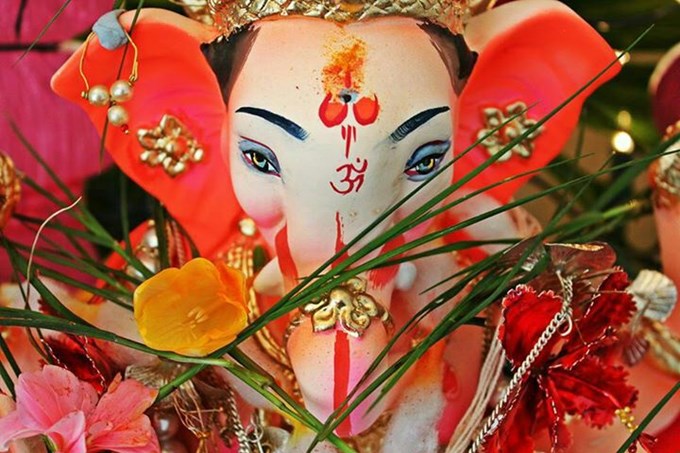In mid-September, many Hindus in Auckland will welcome, host and worship Lord Ganesha in their homes. Though the duration of the festival, celebrations, and rituals may vary for families, the conclusion is the same when bidding the deity farewell.
Ganesha idols were traditionally immersed in and released into the sea or large bodies of water. However, today this practice can have an impact on the environment. In New Zealand, releasing objects into waterways can also be offensive to other cultures.
The ritual of idol immersion can be easily followed while also protecting Auckland’s environment and making sure that seas, lakes and streams are not polluted, says Vinod Kumar, President of the Hindu Council.
“Respectfully living with other cultures and respecting the environment is a huge part of Hindu dharma. Appropriate immersion of idols, flowers and offerings is sure to bring divine blessings and good fortune to people."
"Immersion or visarjan of Ganesha idols symbolises our own life cycle: our bodies dissolve and we get fresh new ones when we are reborn. The clay from idols returns to the bottom of the river or lake, destined to be dug up again the following year, and crafted into new idols. This works well when the idols are made from clay and organic colours and don’t harm the environment,” he explains.
But what if they are not?
Auckland Council has worked with the Hindu Council to develop recommendations on how Ganesha idols and cultural offerings can be immersed in an eco-friendly manner. These contemporary methods adapt to a world of idols made out of inorganic non-biodegradable material but still complete the ritual. The same idol can be worshipped again in the following year.
“Community celebrations of different cultures co-existing with each other is what we value about our local board area. Each community playing its part in protecting our environment such as the Waikowhai coast is also critical," says Puketāpapa Local Board Chair Harry Doig.
"As a board, we will continue to balance the needs of our community with our responsibility towards the environment and our commitment towards our bi-cultural heritage,” he says.
Immersion in flowing water, lakes or seas
Idols made from non-biodegradable material like plastic, plaster of paris or metal, can be simply dipped in the sea and then removed, rather than being set adrift, which would see the idols flow back to land and create pollution.
As per this practice, the main idol made of metal or any other non-biodegradable material need not be immersed. A small idol made of turmeric or clay kept alongside the main idol throughout the festival can be immersed and set out to sea instead.
Immersion at home
Immerse idols at home into a large drum of water.
Idols can also be buried in your garden if there is no natural water body nearby. Items should only be buried in approved areas, such as in memorial gardens or on private property.
Disposing of cultural offerings
Loose natural materials such as flowers and food used in worship can be buried in gardens or offered to a fire.
Offerings such as kumkum (vermilion), chandan (sandalwood power), mango leaves, banana leaves, vilva grass and flowers can also be disposed of in water in small amounts. Any string or wire used in garlands is harmful to marine and bird life and should be separated from flowers and garlands and disposed of separately.
Edible food should not be disposed of in the water, as this washes up on the coastline and attracts pests such as rats. Take home or dispose of any food used in offerings into a rubbish bin.
Photos and prints of gods and goddesses can be recycled just like normal paper.
Scattering ashes
Returning mortal remains to nature is an important ritual for Hindus.
“From the spiritual point of view, the process helps the departed soul in its journey in the afterlife and in attaining moksha,” explains Mr Kumar.
“It’s useful to seek guidance for this important ritual to be carried out without disturbing other cultures or harming nature in any way as that would prove to be counter-productive.”
Different cultures have different ways of dealing with cremation and ashes.
Dispersal of ashes in waterways is culturally inappropriate for Māori. Speak to tangata whenua (the people of the land) before scattering ashes in the ocean or flowing water.
Places like maunga (volcanic cones) and food cultivation and gathering areas are considered wāhi tapu (sacred) to Māori. It is also culturally unacceptable to scatter ashes in these places.
Ashes can be scattered on private property if the property owner gives their permission first.
Scatter only ashes and make sure to take home all non-biodegradable material such as metal urns, cloth, plastic strings.
Find more information on scattering ashes here. Further information will be available soon, so watch this space.


